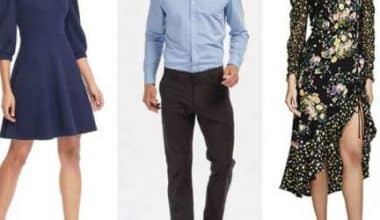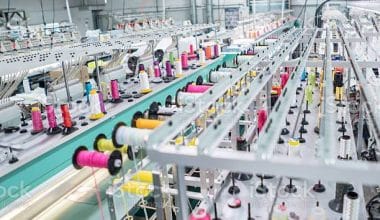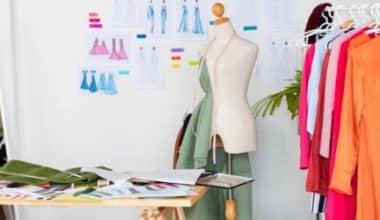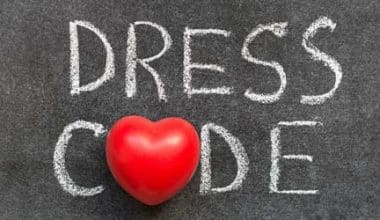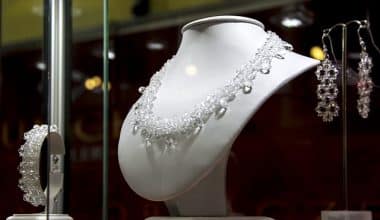The clothing you wear in formal settings is known as work attire. Depending on the situation, such as an interview or a meeting, or the sector of your employer, you may choose how to dress. Work attire can range from “casual” to “business formal,” depending on the situation. The type of work attire that is appropriate depends on the environment. Men’s idea of work attire is different from that of women
Read on to learn more about men’s work attire and also that of women.
Work Attire
For many workplaces and business gatherings, work attire is the standard dress code. It indicates a business-casual look that is polished and fashionable.
Types of Work Attire
#1. Casual
The term “casual work attire” refers to informal clothing worn in many settings outside of the workplace as well as in the majority of business settings. If your workplace allows casual attire, such as T-shirts, jeans, and open-toed shoes, you may choose to wear them as well. Even though the office is generally casual, you shouldn’t wear casual clothing when meeting with clients or during interviews.
T-shirts, button-down shirts, blouses, and sweaters are examples of tops worn with casual clothing. Denim, khakis, linen, cropped, or shorts are some examples of bottoms. Sneakers, loafers, sandals, or low heels are examples of casual footwear.
#2. Smart Casual
It is appropriate to wear this kind of work attire in more laid-back workplaces, including casual ones.
Wearing smart casual to an interview in a less formal workplace is another option. This way, you can adhere to their casual dress code while still projecting a polished, professional image that shows that you take pride in how you look. Clothing items that fall under the category of “smart casual” include blazers, sports jackets, ties, button-down shirts, collared shirts, dresses, sweaters, trousers, khakis, skirts, blouses, heels, flats, dress shoes, clean sneakers, jewelry, belts, and scarves.
#3. Business Casual
This is suitable for a variety of interviews, client meetings, and professional settings. This is typically a suitable way to dress if you’re unsure about the occasion because it is neither overly casual nor overly formal. In many workplaces, business casual attire is the norm. Clothing items that fit into the business casual category include pencil skirts, slacks, khakis, trousers, blouses, collared shirts, button-down shirts, sports coats, blazers, and sweaters.
Belts, ties, simple jewelry, and jackets make good accessories. Shoes can come in many different styles, such as flats, casual sneakers (made of leather or canvas), Oxfords, loafers, mule shoes, boots, or heels.
#4. Business Professional
In more formal settings or workplaces with strict dress codes, the term “business professional” refers to a traditional look. In fields like finance, law, or government, you might dress professionally. work attire should be tailored to your specific measurements and should be well-fitted. When dressing professionally for business, you can don neat dresses, slacks, skirts, slacks, dark suits, and ties. Well-groomed blouses or button-down shirts with a blazer are examples of business professional tops. Heels, loafers, and flats are examples of business professional footwear. You only need a few belts and pieces of jewelry as accessories.
#5. Business Formal
When attending award ceremonies, special dinners, benefits, or other significant evening events, business formal attire is appropriate. Similar to a “black tie,” business formal is formal attire that should only be worn on special occasions. Dark pants suits, dark suits with ties, black suits with light button-down shirts, skirt suits, and suit dresses are examples of business formal attire. Sometimes wearing a long evening gown is appropriate. Formal flats, heels, Oxfords, or loafers are all acceptable shoe choices. Add some finishing touches with jewelry, belts, a tie clip, or tiny cufflinks.
Work Attire for Women
Given that you’ll be wearing your office attire all day, it’s crucial to feel comfortable when choosing your outfit. As a result, pants are frequently a smart choice because they’re usually more comfortable for sitting and moving around in than fitted dresses and skirts.
#1. Women’s Business Pants
There are many different types of business pants available for women, including straight-leg, bootcut, and cigarette styles. Choose a pair with a cut that best accentuates your body type. However, pay close attention to the length. The best color choices are neutral tones like black, navy, and grey.
#2. Women’s Business Skirts
The length is important when choosing a skirt to wear to work. The perfect length for your skirt is at or below the knee. Additionally, check that any slits don’t rise too high and that the fit is comfortable so you can sit and walk. Although A-line options can also be ideal, pencil skirts are a great option.
#3. Women’s Business Shirts
A button-up shirt is always appropriate for the workplace. When purchasing shirts, spend your money on black and white designs that serve as wardrobe essentials. After that, for a unique touch, add designs in muted tones or rich hues.
#4. Business Dresses
Work attire for women should fit comfortably without being overly restrictive. Additionally, they ought to be modestly short, ending at the knees or less. Sleeveless dresses can also be worn in business settings if they are paired with a shirt or sweater underneath or a blazer on top, though short- and long-sleeved dresses are more appropriate.
#5. Business Suits for Women
A business suit is a great choice of work attire, for women working in a formal setting, whether it is worn with pants or a skirt. It is best to choose a plain suit, in a neutral color, that has few, if any, embellishments or decorative details. You can instantly look put together and stylish by simply adding a business shirt and a pair of court shoes.
#6. Business Shoes
Dress shoes that are neat, polished, and professional and that go with your outfit are recommended. Although heels are not necessary, classic pumps are a good wardrobe staple. Avoid wearing any footwear that makes it difficult for you to walk or that is too flashy. Never wear heels taller than 4 inches, and if a kitten heel is more comfortable for you, wear it.
#7. Business Accessories and Grooming
Refrain from wearing any distracting or overly flashy accessories, such as a purse, nail polish, or jewelry. Additionally, stay away from overly applied perfume and makeup. Hair needs to be neatly coiffed and styled. Take some breath mints with you as well!
Read Also: OFFICE CASUAL: Outfits, Shoes & Mens
Men’s Work Attire
Your business-casual attire speaks volumes about how much you value your career. Your choice of clothing reflects how much respect you have for yourself.
You’ll look better at work if you follow the advice in this guide to men’s work attire. However, the most important benefit is that it will teach you how to present yourself professionally and in a way that will get you the next promotion. Suit, shirt, tie, and dress shoes should be the foundation of your business work attire.
Once you’ve taken care of the basics, you can begin to focus on adding accessories to finish your looks, such as a belt, a dress watch, and cufflinks.
#1. A Business Suit
An outfit made entirely of one material is known as a business suit. A two-piece suit must at the very least have a jacket and pants. A waistcoat is layered beneath the jacket in a three-piece suit. Start with a simple, dark navy suit with no patterns for your first suit. The most versatile color, navy goes well with a variety of shirts and ties. Black or dark charcoal should be the color of your second suit. Additionally, it blends well with other hues and can be worn on more formal occasions.
Make sure the business shirts you choose have a polished appearance when all the buttons are fastened. For the collar to perfectly complement your tie, it needs to be substantial and structured.
#3. Ties
With a tie, you have the opportunity to show off your emotions and personality while maintaining a professional image. You can alter your overall appearance while wearing the same suit and shirt by using a variety of ties. Always tie your tie so that it hides the collar of your shirt.
#4. Carefully Choose Your Dress Shoes
Dress shoes are the final essential component of men’s work attire. Oxfords—also known as Balmoral in the United States—are the most popular style of business shoe. A full day of wearing dress shoes can be uncomfortable.
#5. Elevate Your Business Look With the Right Accessories
Once the basics of men’s work attire are established, you can begin to add accessories to further express your personality and sense of style. You can increase your wardrobe with extras like fine leather belts and wristwatches.
Women’s Construction Work Clothes
As you may already be aware, safety always comes first in the construction industry. Consider your safety before choosing your construction attire. Safety in the sense of protecting your body from injuries sustained on construction sites. Construction is strenuous manual labor that necessitates extreme caution due to the involvement of your entire body. As a result, we have created this guide to assist you in understanding what you require and why you require women’s construction work clothing. The following are appropriate outfits and accessories for female construction workers.
#1. Heavy-Duty Boots
One piece of workwear you must always have in your closet is boots. They protect your feet from the sun, dirt, jolts, heat, and cuts. Leather is crucial for ensuring durability when it comes to the construction of fashionable footwear. The majority of work boots have a strong leather surface and a middle cushion to disperse heat.
#2. Work Pants
Given their durability, women’s workwear jeans are best suited for manual labor.
You can be sure that no additional items, like wires or nails, will enter your women’s fieldwork pants. Since you will be moving around a lot during the day, it is best to wear loose-fitting women’s industrial pants. But if you work in management, jeans are more appropriate for casual occasions.
#3. Work Gloves
The gloves used by women in the workplace are not made of wool. Since they will be used for abrasive tasks, they have leather or cotton duck materials instead. To keep you cozy and firm on your hands, the gloves’ interior is lined with wool. Because of your grip, your fashion gloves for the construction site must fit perfectly.
You should wear the correct-sized gloves because construction involves a lot of lifting. Durable materials include leather and cotton duck. As a result, your gloves will continue to be in excellent condition for a long time.
#4. Construction Jackets
Your jacket for construction worker attire should first and foremost fit you perfectly, just like your everyday jacket. You shouldn’t move around in clothing that is likely to fall off. However, the female construction attire jacket shouldn’t be so tight that you can’t move your arms. You might end up destroying it.
Due to their ability to lessen sweating, polyester, nylon, and fleece are the inner materials found in the majority of construction jackets.
#5. Accessories
Women and even men tend to wear belts and watches when they are on construction sites. Given their versatility and fashionable appeal, black leather belts are the best choice. They complement the denim, khaki, cotton duck, or any other type of pants you may be wearing. Rubber watches are another option because they are durable and waterproof.
#6. Work Vests
To stand out on a construction site, work vests are painted in vivid colors. To identify the specific business you are working for, logos from the construction company are typically stamped on construction materials. Therefore, work vests can help you identify the workers on the site.
Furthermore, work vests have insulation features that keep you warm when it’s too hot to wear a jacket. In the winter, you can layer it under your construction jacket to stay warm.
#7. Work Hats
Every construction worker must wear a work hat, especially a hard hat, according to regulations for construction sites. Hard hats shield wearers from harm when they come into contact with sharp objects, falling objects, rain, collisions, and electric shocks. The fastening bands on each side of the lightweight work hats help to evenly distribute the hat’s weight across the wearer’s head.
#8. Sunglasses and Safety Glasses
The main purpose of sunglasses and safety glasses is to protect the eyes. They protect your eyes from sunlight and, consequently, from skin-damaging ultraviolet rays. Workers in manufacturing, laboratories, factories, and machine shops all wear safety glasses. They keep all sand and other particles out of their eyes.
They completely enclose your eyes to shield them from any side or frontal intrusion. To hold them in place while you work, they frequently have silicon bands in the back.
#9. Coverall and Overall
Every construction project requires coveralls. You must carry stones and sand while performing countless difficult tasks, including plastering walls, painting, drilling nails, and fixing floors. In addition to keeping your women’s work clothing clean, overalls also protect your body from the cold. To maintain their quality for as long as possible, they also have triple stitching.
What Are the Four Types of Attire for Work?
- Business Formal
- Business Professional
- Business Casual
- Casual
Which Are the 5 Dress Codes?
- Casual
- Business formal
- Business casual
- Black tie (optional)
- Smart casual
What Is the Best Work Attire?
Professional work attire is a formal dress code that is frequently observed in more conventional workplace settings. The workplace typically requires business work attire in sectors like banking, accounting, law, government, and finance. Business casual attire may also be suitable for networking events or job fairs where you are aware that a more formal appearance is required. The best colors for any style are simple, neutral hues like black, gray, and navy. Avoid chunky jewelry or any other accessories that make noise when they move, as well as oversized belts and busy ties. Keep all of your accessories to a minimum.
Putting your belt and shoes in sync, for instance. Consider closed-toe footwear like Oxfords, loafers, low pumps, or flats when choosing shoes. Keep your shoe’s heel under 3 inches if it has one.
What Are the Types of Formal Attire?
- White tie
- Black tie ( optional)
- Outdoor formal
- Cocktail
Conclusion
You probably already know whether your office culture is considered business casual or professional. Your work attire should project your authority and competence while also displaying a modicum of personality without being over the top. Since expectations vary among states, professions, and workplaces, it’s critical to understand the cultural norms of your office for both business casual and “client-ready” days.
Work Attire FAQs
What is aWork Attire?
Work attire is the standard dress code for many workplaces and business gatherings. It indicates a business-casual look that is polished and fashionable.
What Are the Four Types of Work Attires?
- Business Formal
- Business Professional
- Business Casual
- Smart Casual
What Are the 5 Dress Codes?
- Casual
- Business formal
- Business casual
- Black tie (optional)
- Smart casual
Related Articles
- CASUAL OFFICE ATTIRE: Top Unique Attire for Both Men & Women in 2023
- What To Wear To An Interview For Men and Women: Detailed Guide
- BUSINESS CASUAL FOR WOMEN: Best Outfit Ideas 2023
- Clothing Business Casual: All you need (+ quick tips)
- CASUAL ATTIRE: Smart Stunning Attire for Both Men & Women

